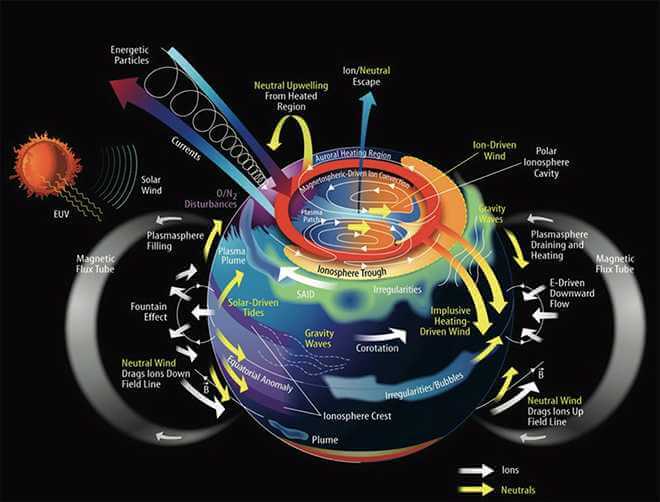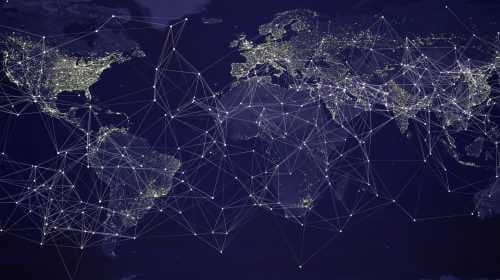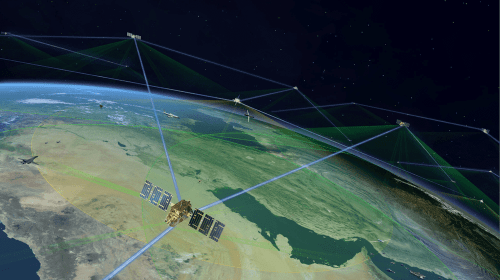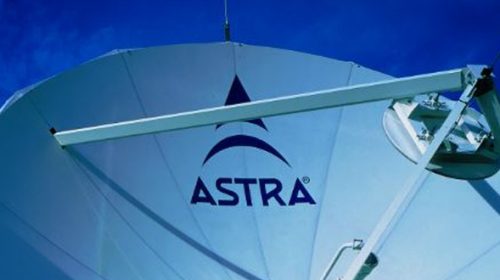Jan 24, 2018
In the first quarter of 2018, SES, a world leading satellite operator, will be launching a new satellite SES-14 to replace NSS-806 at 47.5° west, providing new capacity over the Americas and North Atlantic Region. SES-14, based on the Eurostar-3000 platform manufactured by EADS Astrium, will bring additional Ku band capacity to service growing Direct-to-Home and Direct-to-Cable services. It will also provide broadband satellite (VSAT) services in both Ku and C band. The satellite will deliver multi-spot Ku and Ka-band beams providing new high throughput capacity which is ideal for traffic intensive applications including mobile backhaul, and growing maritime and aeronautical services.
SES, focusing on value-added end-to-end solutions was first to deliver both GEO (Geosynchronous Earth Orbit) and MEO (Medium Earth Orbit) services worldwide. SES-14 will join over 50 GEO satellites, in addition to SES’s 12 MEO satellites.
This all sounds pretty normal for a modern communications satellite but this one has a stowaway. In another first, SES-14 will be the first commercial communications satellite to host a NASA science mission. SES-14 is going to host NASAs Explorer program’s GOLD (Global-Scale Observations of the Limb and Disk) payload. Limb and disk refers to the arc of the earth’s upper atmosphere, the border between space and earth. The GOLD instrument will be launched aboard SES-14 in order to study the ionosphere. This is becoming critical as humans increasingly interact in the near-Earth space overhead.
Earth is not the only place that has weather. Space has weather as well. This weather is defined by shifting magnetic and electrical fields, along with streams of charged particles. Space begins only 60 miles (100 km) above the Earth’s surface, in a layer of atmosphere that is shifting and changing as it is buffeted by both Earth weather and space weather.
The ionosphere, above the ozone layer, is essentially a sea of electrically-charged electrons and ions that have been cooked by the Sun’s radiation. Ions are atoms that lose or gain electrons and gain a “negative” charge in the process. This electric charge can be hazardous to satellites. The ionosphere shares space with very high, very thin layers of Earth’s upper atmosphere, which places this region in a state of constant flux between Earth and Sun weather conditions.
This region of near-Earth space is increasingly important. It is home to astronauts, radio signals used for aeronautical and maritime guidance, tracking satellites, and GPS systems. In the near future additional constellations of broadband communications satellites will be launched that will operate in this region. Understanding how it is affected by Earth and space weather is becoming increasingly important for protecting not only astronauts in space, but resources that have become very important to humans on the ground.
Two missions are being launched by NASA to explore this region that, while close to home, is notoriously difficult to study. In addition to GOLD, being launched on SES-14, another spacecraft will be launched later in 2018 called the Ionospheric Connection Explorer, or ICON. The two systems will work together. GOLD sitting high above in a fixed GEO position will have a full-disk view of the ionosphere and upper atmosphere with updates every 30 minutes. These large-scale measurements will provide detailed and comprehensive measurements of related processes.

Operating in low-Earth orbit, ICON will fly directly through and above areas of interest, capturing local data adjacent to the spacecraft, as well as remote data on the forces shaping the region. We can think of GOLD as capturing landscapes from 22,000 miles (35406 km) above, while ICON captures detailed close-ups at 350 miles (563 km) in altitude. As ICON will pass within GOLD’s field of view, the systems working together will provide unique snapshots from different perspectives. The overlap in data will make it easier to understand weather-related shifts from both hurricanes below, and geomagnetic storms above, in this important region.
Examining conditions below, it is suspected that El Nino-driven warming of the Pacific Ocean increases water vapor which in turn increases the amount of solar energy absorbed by the atmosphere. The additional heat alters wind currents, causing patterns to fluctuate and affect conditions in the ionosphere. GOLD and ICON will measure this activity in order to better forecast it.
Geomagnetic storms which come from above, are temporary disruptions of the Earth’s magnetic field set off by solar activity. GOLD will examine these disruptions which can sometimes create bubbles of dense, charged gasses over the equator and tropics, occasionally interfering with radio communications.
There is actually a third mission in the fleet. TIMED (Thermosphere, Ionosphere, Mesosphere Energetics and Dynamics) was launched 16 years ago, and provides a third vantage point for measurements. TIMED does not have the same complement of measurements and tools as ICON and GOLD, but it has provided valuable information for a complete solar cycle, as a result of having its mission increased a couple times.
Earth’s “interface to space” has become increasingly important as rapid commercialization associated with “NewSpace” continues. It is important to understand the region in which critical resources will operate in order to shield or maneuver them as required to keep them operational. This mission highlights the collaboration of many different players from government, educational and commercial perspectives, all with an interest in a better understanding of our gateway to space.





